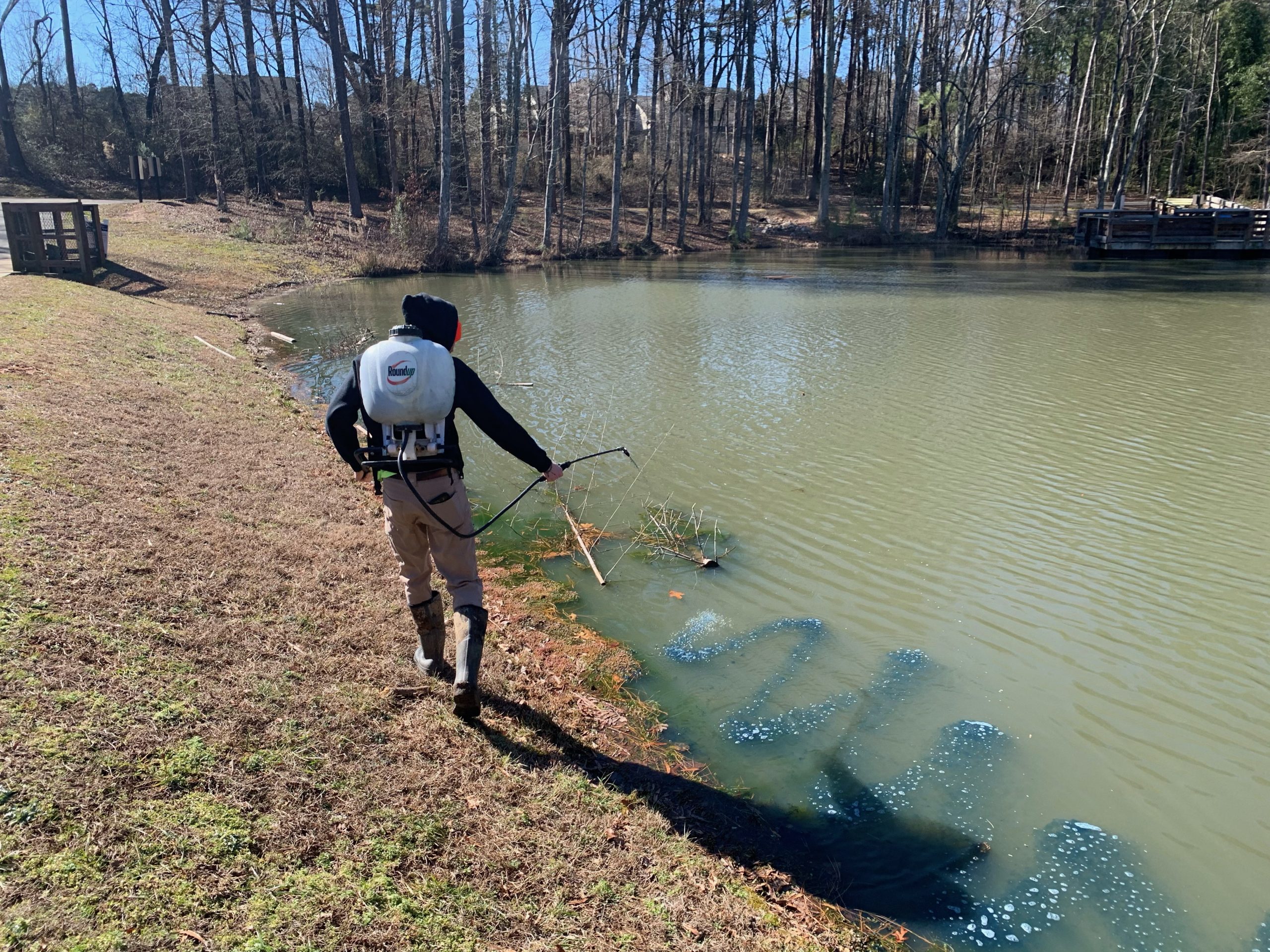With winter winding down, warmer days and nights are quickly ushering in changing conditions in our stormwater ponds and wetlands. The lull of activity seen over the last few months is giving way to natural spring activity, both good and bad. This time of year there are a couple of things particular to stormwater SCMs that we can count on: 1) Spring algae blooms and 2) awaking littoral vegetation. It’s time now to make plans for what’s just around the corner.
Spring Algae


Spring algae is common in almost every pond and wetland. It’s normal for a narrow ring of filamentous algae to grow up along the shallow shoreline areas of a pond, or throughout the shallow areas across a constructed wetland basin. Algae can be sparked by spring applications of fertilizers on surrounding turfed banks or in the upstream watershed. Sometimes it is simply related to the natural warming of water temperatures and availability of nutrients from organic debris on the pond bottom.
Either way, there are a couple of things to keep in mind when dealing with nuisance filamentous algae blooms. The first is – don’t panic. Just because ring of algae pops up quickly doesn’t necessarily mean the pond is being overtaken or is in an “unhealthy” situation. Spring algae species like Spirogya, respond quickly and positively to control methods. Typically, a simple algaecide treatment or two will often return the pond to back to normal. Once the initial spring surge of algae growth is corrected, most stormwater SCMs can be effectively managed through our routine, monthly maintenance service.
Littoral Vegetation
Another component of many SCMs that experiences dramatic changes in the spring is the beneficial aquatic vegetation found in littoral shelf areas. These littoral zones are the shallow areas of stormwater ponds and wetlands that have designed depths suitable for a variety of beneficial aquatic plants. During winter months, most aquatic plants go dormant to protect themselves from harsh weather conditions. Some residents may complain that the SCM is unsightly or wonder if something is wrong, but this dead-looking appearance is a normal part of their growth cycle.

In the spring when weather conditions are safe again for growth, these plants will begin to sprout up and turn green again. The plants grow quickly and this is a great time to assess the overall health of the SCM vegetation. The viability of these plants is crucial for SCMs to stay in regulatory compliance. If aquatic plants are thin in numbers, sparse in some areas of the littoral area, or lacking in variety, more plants may be needed in order to pass the required Annual SCM Inspection. Assessing the littoral plants in the early spring can prepare the SCM for the year’s annual inspection and will also leave time to perform a supplemental planting before the summer, when hot conditions can make it more difficult for the plants to establish. One of the key reasons for these plant shelves is to reduce nutrients that feed nuisance algae blooms. Healthy and robust littoral shelves make for a healthier, cleaner pond or wetland.

Spring changes in our stormwater ponds and wetlands can be quick and dramatic. Whether responding to a spring algae bloom, or assessing and preparing for a compliant littoral zone, FLPM can handle all SCM needs with our year-round management service.


